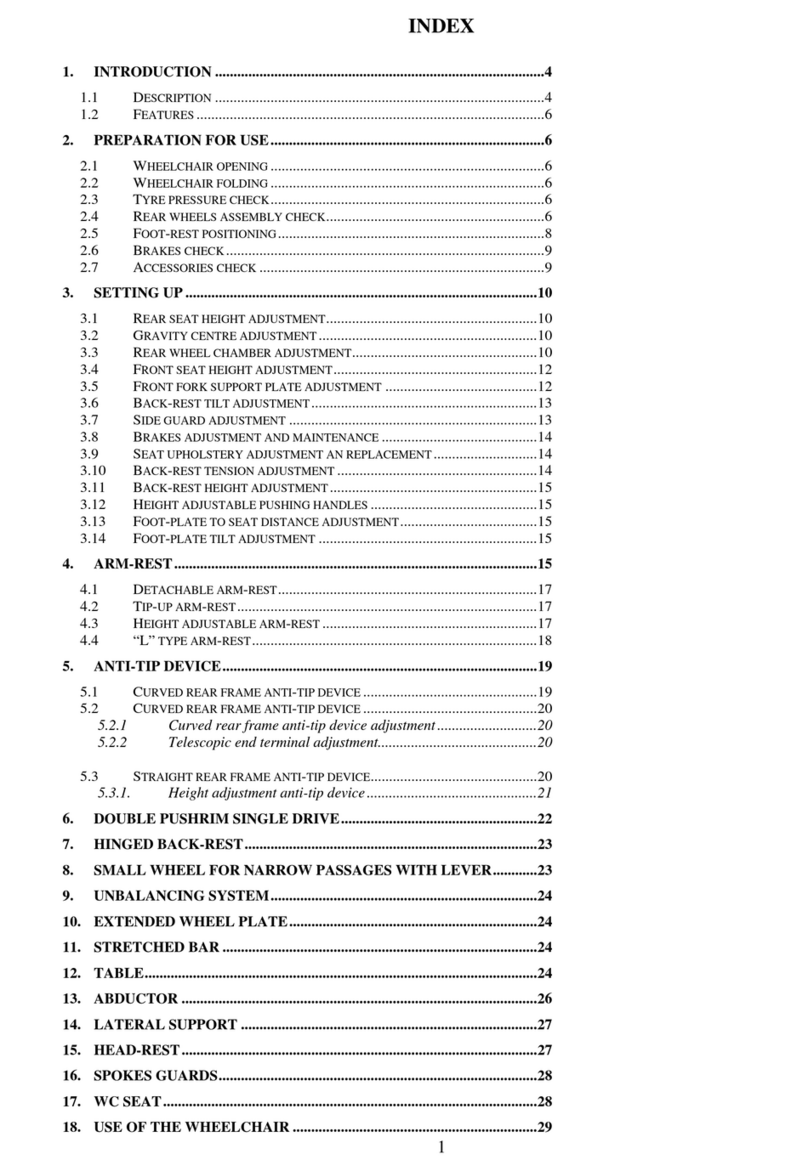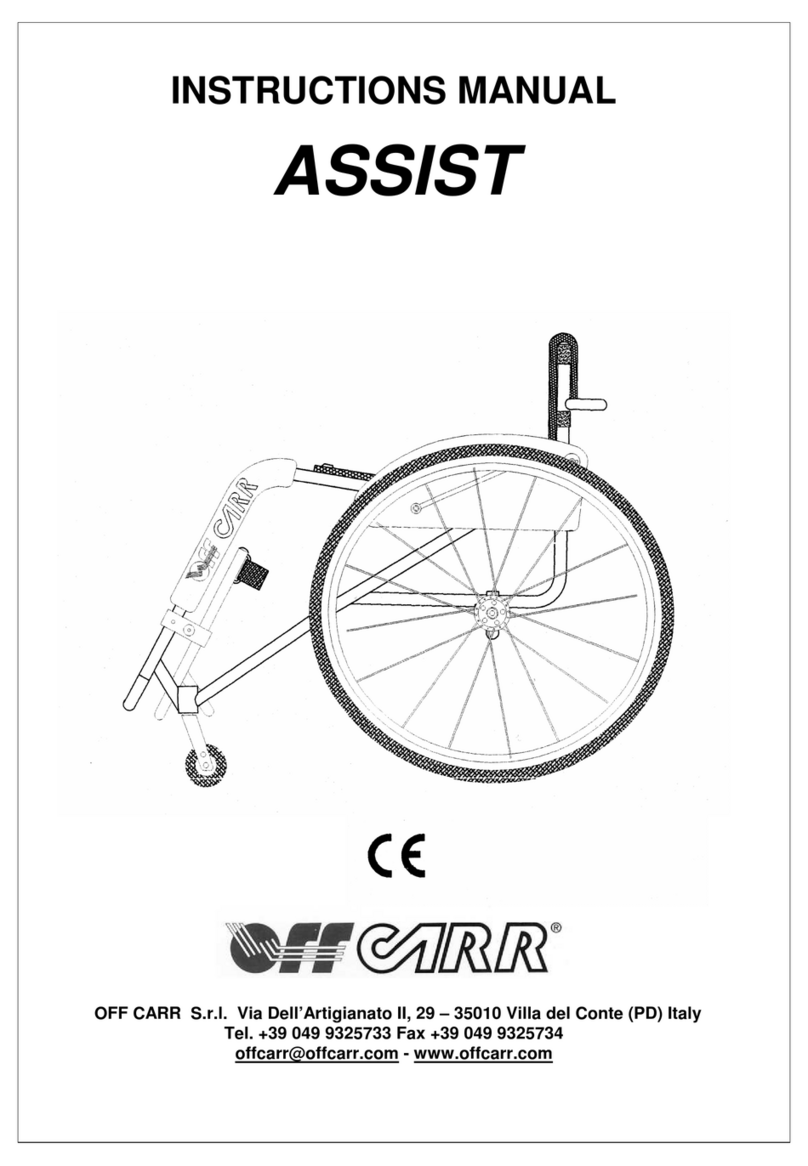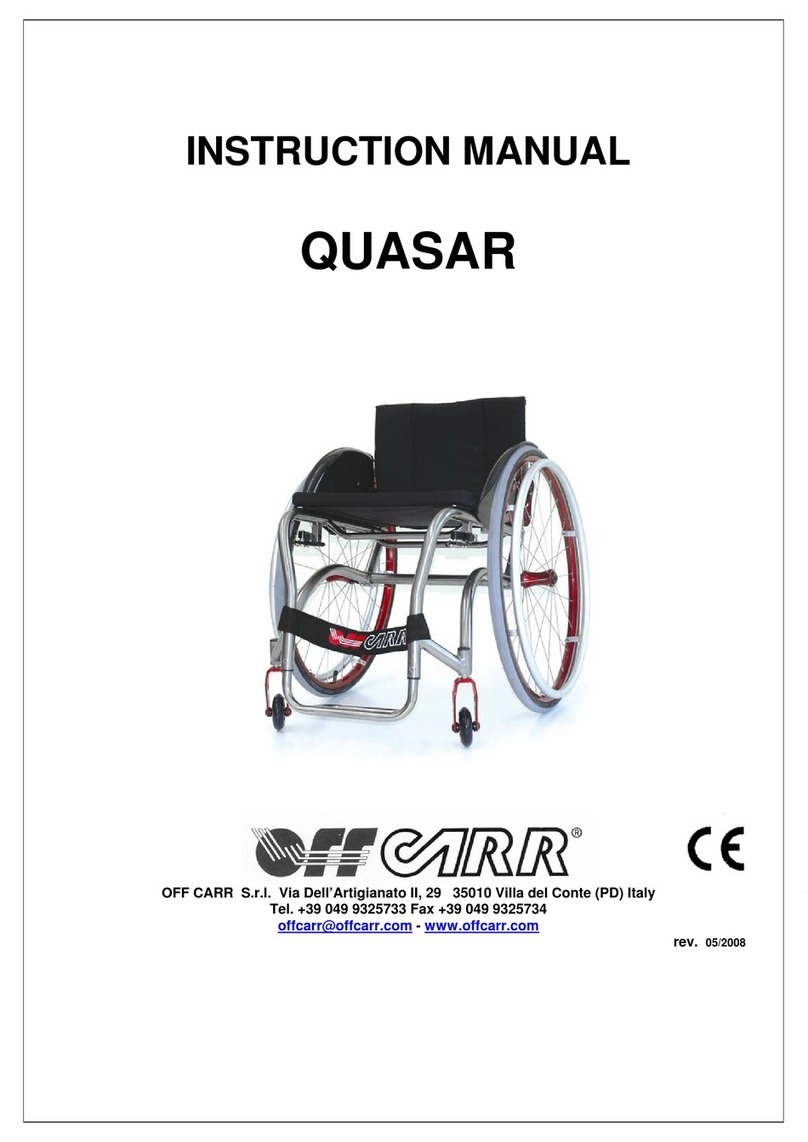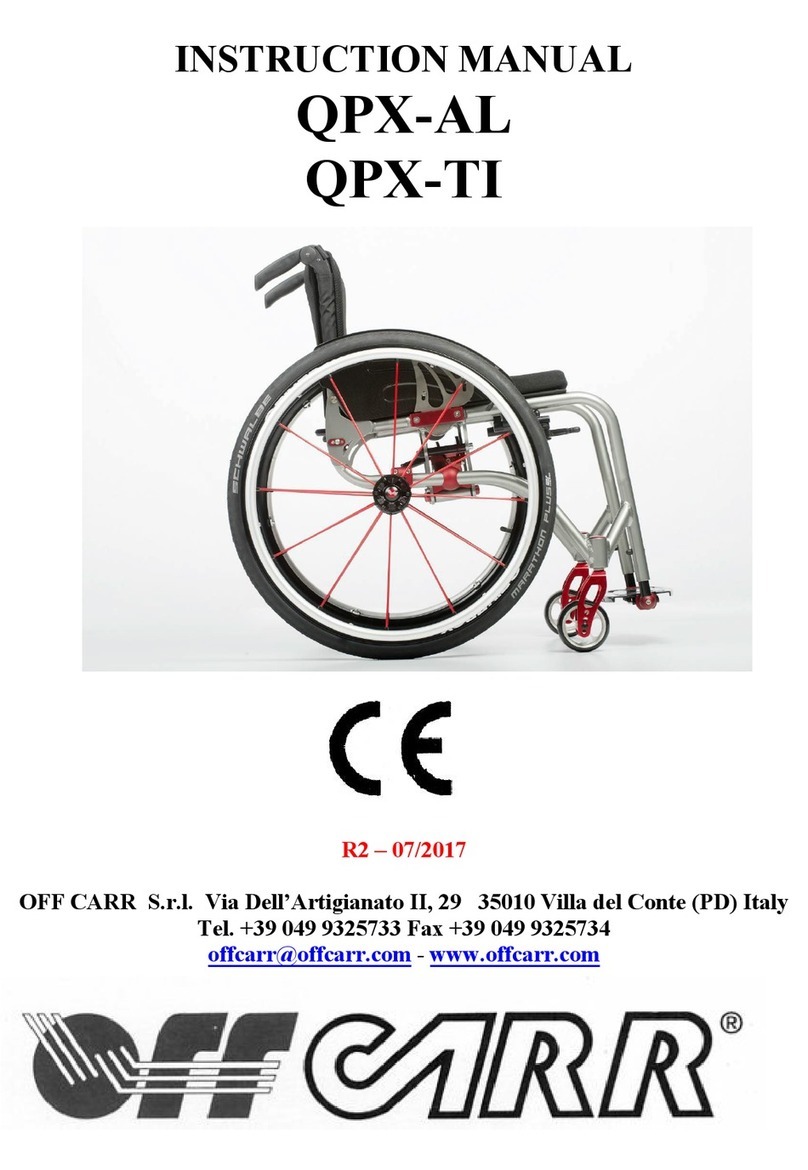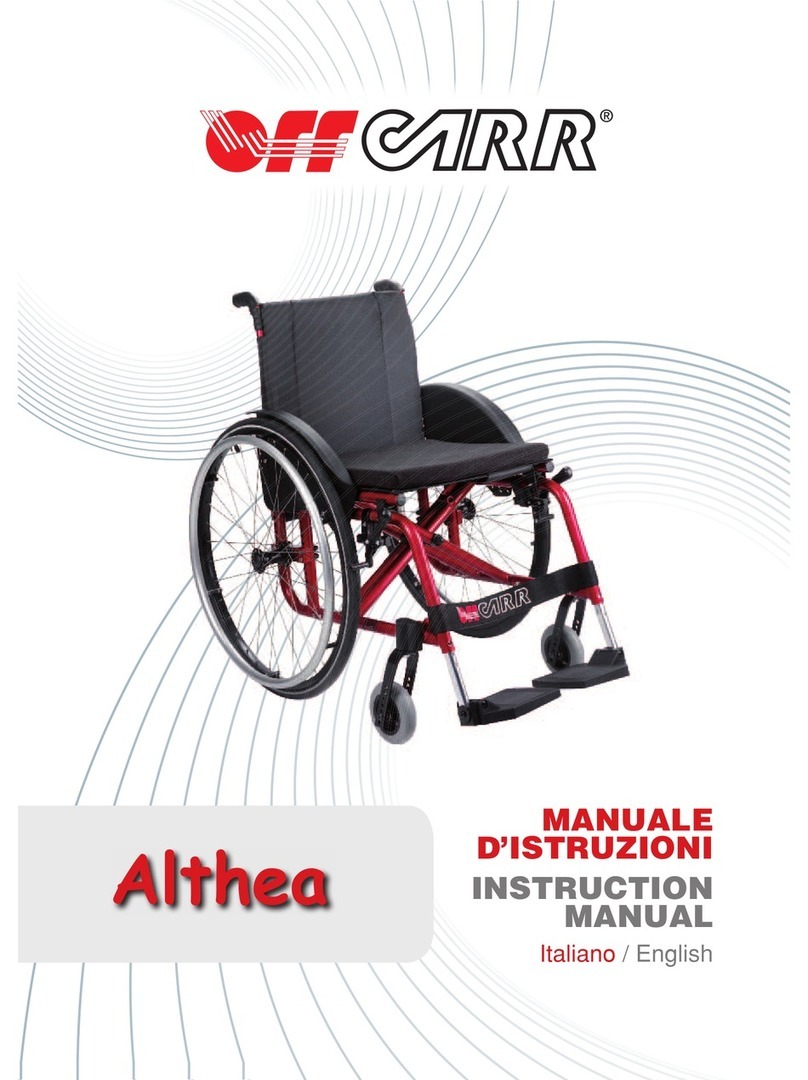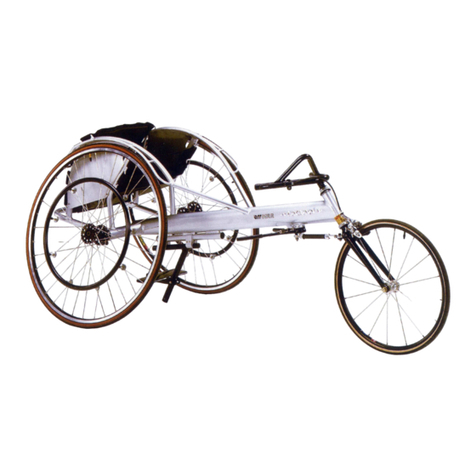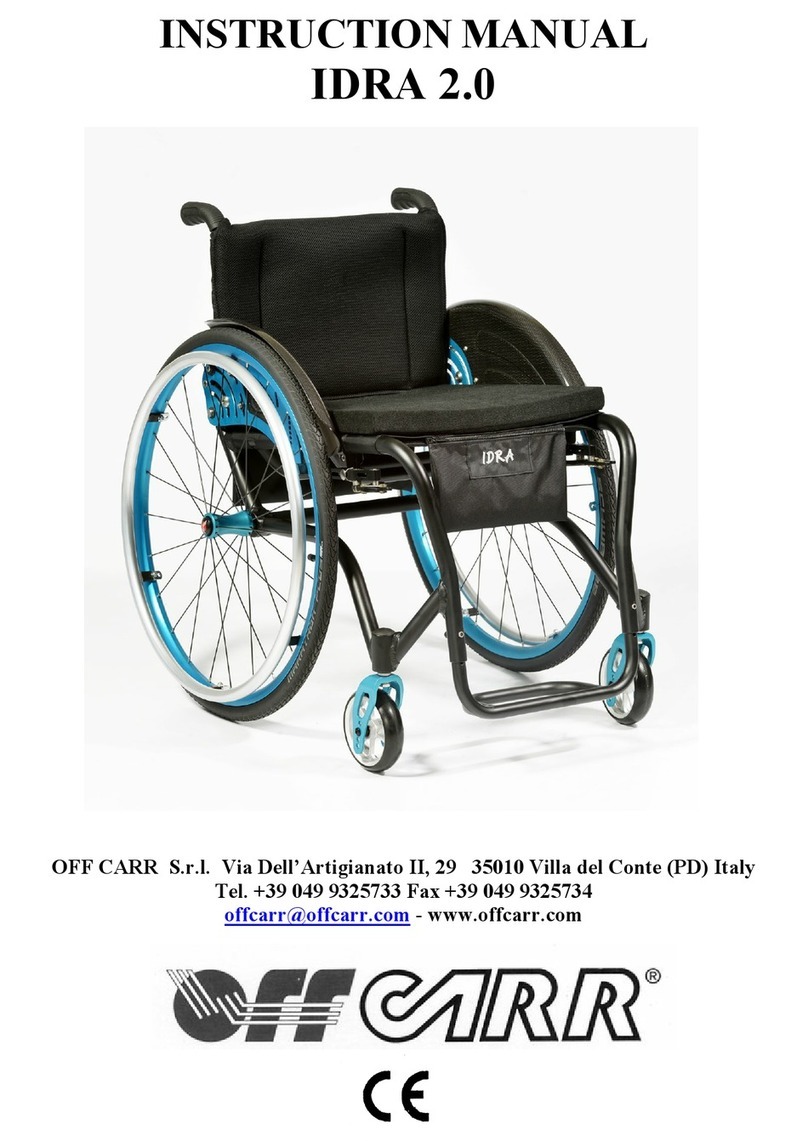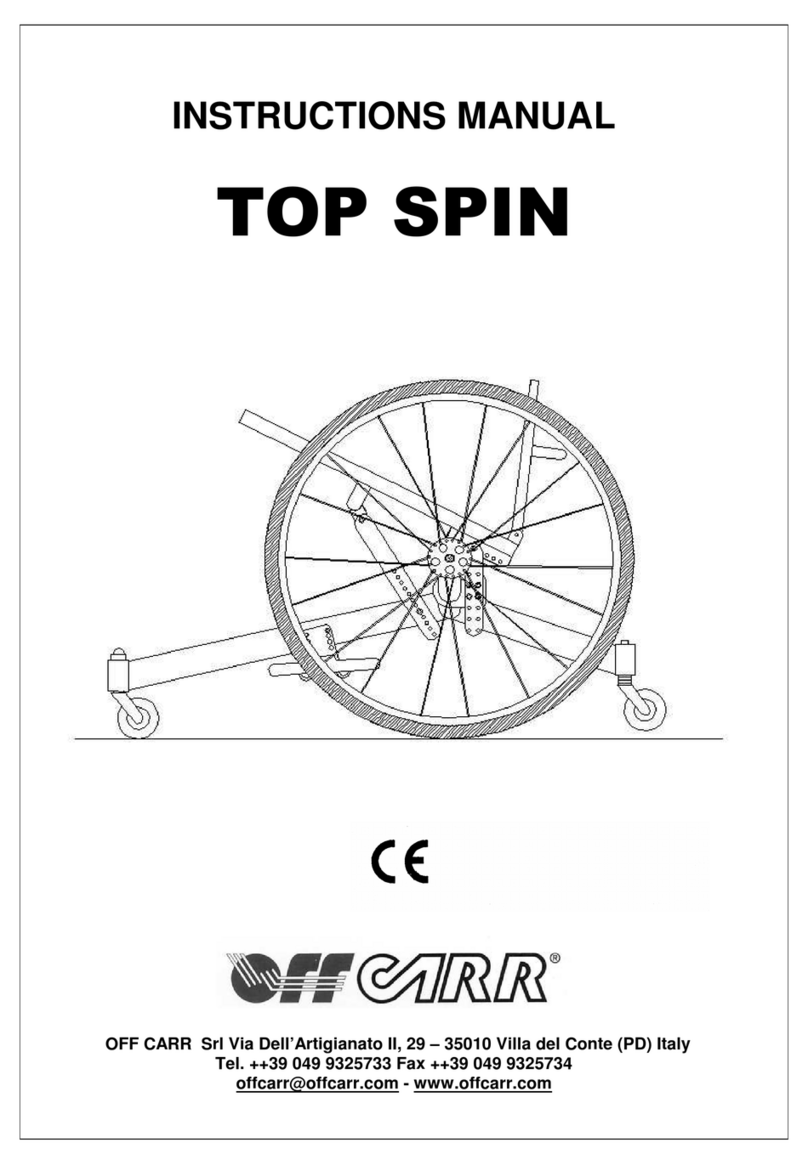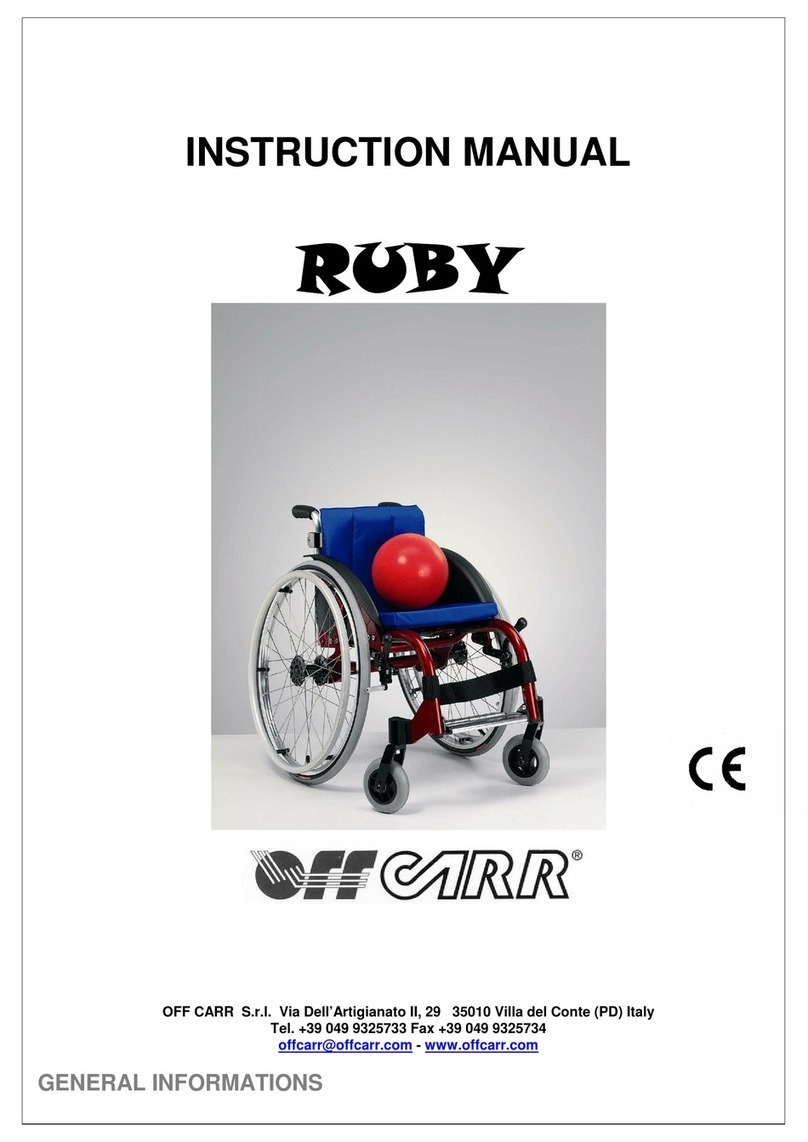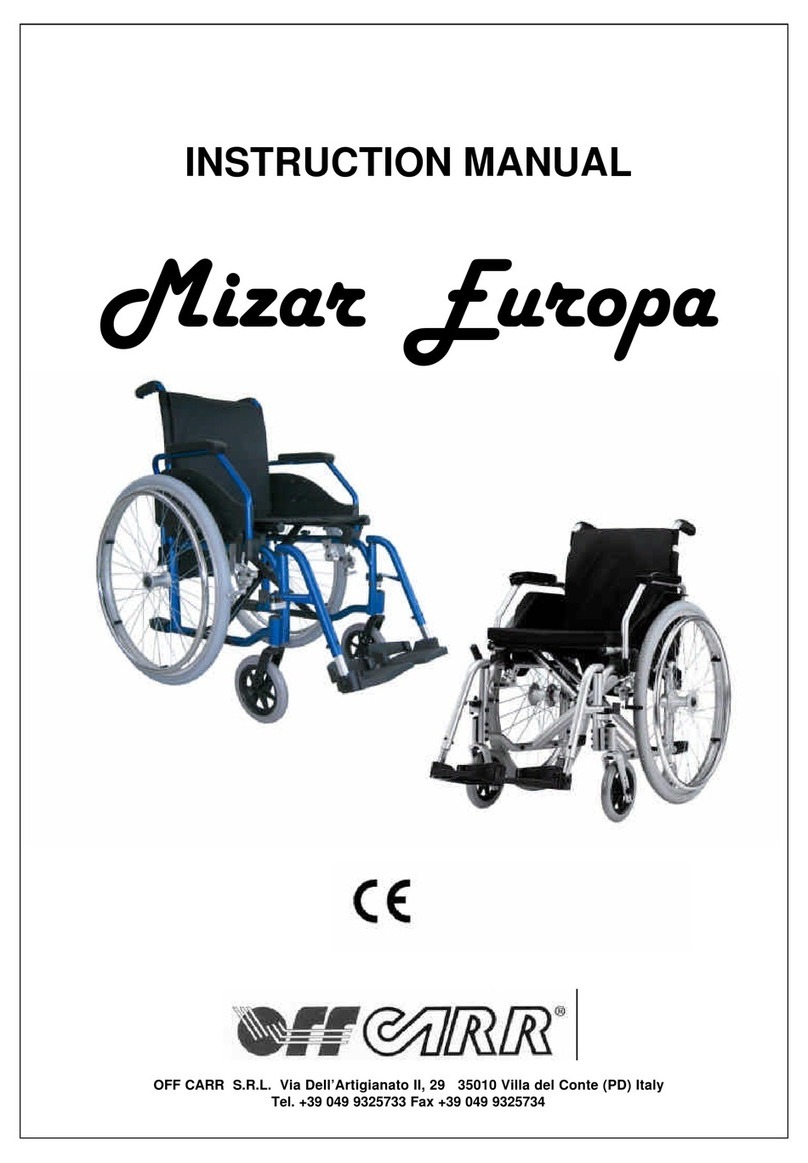
INDEX
1. INTRODUCTION..................................................................................................4
1.1 DESCRIPTION ............................................................................................................................. 4
1.2 FEATURES .................................................................................................................................. 5
2. PREPARATION FOR USE .....................................................................................6
2.1 BACK-REST OPENING/FOLDING .................................................................................................. 6
2.2 REAR WHEELS ASSEMBLY AND RELEASE.................................................................................... 7
2.3 TYRE PRESSURE CHECK .............................................................................................................. 7
2.4 CHECKING THE BRAKES ............................................................................................................. 8
2.5 CHECKING THE ACCESSORIES..................................................................................................... 8
3. SETTING UP ........................................................................................................9
3.1 SEAT DEPTH ADJUSTMENT.......................................................................................................... 9
3.2 GRAVITY CENTRE ADJUSTMENT ................................................................................................. 9
3.3 REAR SEAT HEIGHT ADJUSTMENT............................................................................................. 11
3.4 FRONT SEAT HEIGHT ADJUSTMENT........................................................................................... 11
3.5 FRONT CASTOR REPLACEMENT ................................................................................................ 12
3.6 REAL WHEEL CAMBER ADJUSTMENT ........................................................................................ 13
3.7 FRONT FORK SUPPORT PLATE ASDJUSTMENT............................................................................ 14
3.8 BACK-REST TILT ADJUSTMENT ................................................................................................. 14
3.9 BACKREST HEIGHT ADJUSTMENT ............................................................................................. 15
3.10 HEIGHT ADJUSTABLE PUSHING HANDLES ................................................................................. 15
3.11 BACKREST TENSION ADJUSTMENT ........................................................................................... 16
3.12 FOOTPLATE TO SEAT DISTANCE ADJUSTMENT .......................................................................... 16
3.13 BRAKE SETUP AND MAINTENANCE ........................................................................................... 17
4. ANTI-TIP DEVICES............................................................................................18
5.1 USE OF THE REVOLVING ANTI-TIP DEVICE ................................................................................ 18
5.2 ADJUSTMENT OF THE ANTI-TIP DEVICE .................................................................................... 19
5.2.1 Adjustment through the rotation of the support plate........................................................ 19
5.2.2 Anti-tip device terminal adjustment.................................................................................. 19
5. UNBALANCING SYSTEM ...................................................................................19
6. ARMRESTS........................................................................................................20
7. CUSHION ..........................................................................................................21
8. SPOKES GUARDS..............................................................................................21
9. USE OF THE WHEELCHAIR...............................................................................21
10. WARNING TO REDUCE THE RISKS ASSOCIATED WITH MISUSE OF THE WHEELCHAIR23
11. MAINTENANCE, INSPECTIONS AND CONTROLS ...............................................24
12. CLEANING INSTRUCTRION...............................................................................25
13. TECHNICAL SERVICE .......................................................................................26
14. WARRANTY TERMS ..........................................................................................26
15. PACKAGING, SHIPPING AND DELIVERY ...........................................................27
16. MATERIALS DIFFERENTIATION .......................................................................27
